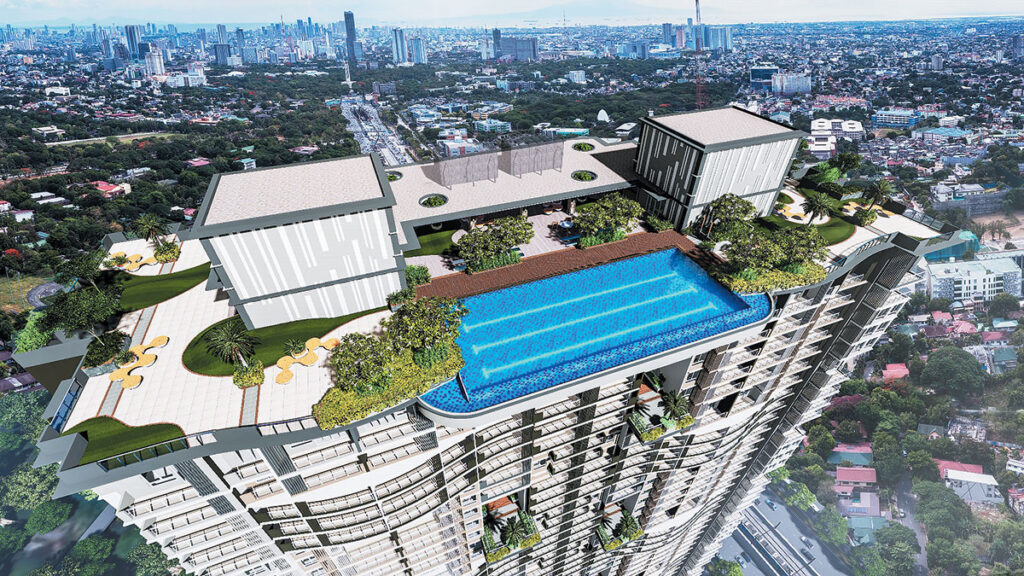Fitness centers, private theaters, swimming pools, children’s play areas and landscape gardens.
In real estate, amenities are among the buyers and lessees’ major considerations when choosing a property, in addition to location, location, location.
An amenity is “a feature of a property that makes it more valuable to potential buyers or tenants,” according to Investopedia.com. Amenities can either be specific to the project or public. Property-specific amenities include features like clubhouses or function rooms, whereas public amenities are those that are available near the property like educational, retail and health facilities, public parks and open spaces, and government-supported hard and social infrastructure and services.
The main difference between amenities and facilities is that the former refers to features that are designed to provide comfort and enjoyment while the latter refers to places or accessories that are provided or built-in.
The importance of amenities
Having access to numerous amenities undoubtedly adds value to both the subject property as well as the development due to the enhanced desirability of both property and development.
They increase the chances of getting the property leased or sold faster, as compared to one that has less or does not have any amenities at all. Not only are developers and condo sellers expected to attain their desired sales price, investors will also be able to secure better offers and higher rents, thus assuring them of better returns on their investment.
In addition to increasing the property’s values and rental yields, open space amenities, whether on-site or adjacent to the property, provide residents with mental wellness and a healthier lifestyle. Such is a premium at this COVID-19 pandemic period, as it offers residents the chance to stroll around, exercise outdoors, and breathe fresher air missed during the extended lockdown.

Regardless of the weather condition, private amenities located within the condominium complex allow residents to continue with their fitness workout in the gyms, comfortably interact with neighbors amidst social distancing, proceed with the delayed get together with friends using available function rooms, or simply enjoy their time leisurely walking around the great lawns or appreciating the landscape gardens. This access saves them money needed to join private clubs with high membership fees.
Beyond the essentials
Buyers, investors and residents expect developments to be provided with clubhouse, multi-size and multi-use function rooms, library/reading room, Wi-Fi lounge, indoor fitness gym, multi-purpose sport facility for basketball, tennis or badminton, game rooms, private theater, kids and adult lap and swimming pools, sun and sky decks, open lawn and colorful garden, and theme-based children’s play area.
Moreover, elevated water tanks and underground cistern, standby power generator, sewage treatment plant, central garbage holding area, automatic smoke detectors, fire alarm and sprinkler system, annunciator panel with speaker, round-the-clock security coupled with CCTV cameras strategically located around the developments provide the peace of mind sought after by residents.
Today, enriched amenities set developments apart. As such, property developers are continuously expanding their features beyond these traditional amenities. On top of that, they are constantly on their drawing boards brainstorming for newer and innovative amenities for all ages, in order to create more value to their projects and target clientele.
Private study nooks and public workstation pods provide residents with better tele-educating spots and work-from-home spaces. High-end developments provide concierge services such that residents can request for distilled water deliveries, hire on-call housekeeping helps and use the business center that provides on-demand secretarial services.
Health-conscious buyers look for a yoga room, sauna, whirlpool, wellness spa, massage room, golf simulator room and Olympic-length pool. Working moms scout for nearby day care facilities and self- or full-service laundry shops while those residents that expect numerous deliveries seek out pay-per-use digital lockers for their convenience.
Luxe buyers seek out projects with dedicated and or RFID-equipped elevators, events pavilion and special function rooms fitted with their own kitchen and pantry areas, cards, cigar and wine lounges, music and entertainment areas, panoramic view sky deck with bar, and helipad. Frequent flyers and travelers look for hotel-branded developments where they can use their premium loyalty cards to tap into their special membership privileges and benefits.
Public amenities are now considered as essential as indoor amenities. Many condominium developments have retail promenades and podiums or are attached to malls that host groceries, supermarkets, and restaurants, among others.
Living in a property that is near major thoroughfares and public utility terminals allow residents to conveniently use alternative modes of transport, a big relief given today’s skyrocketing fuel prices. Not surprisingly, developments conveniently located close to business, commercial and leisure districts are themselves considered an amenity.
More than ever, amenities are both critical and integral elements in the property leasing and buying decision processes. Indeed, their worth cannot be understated, especially if you wish to have a blissful life.
References include “Amenity” by James Chen (Investopedia.com) and “Difference Between Amenities and Facilities” (pediaa.com).
* * *
Henry L. Yap is an architect, environmental planner, real estate practitioner and former professorial lecturer.
